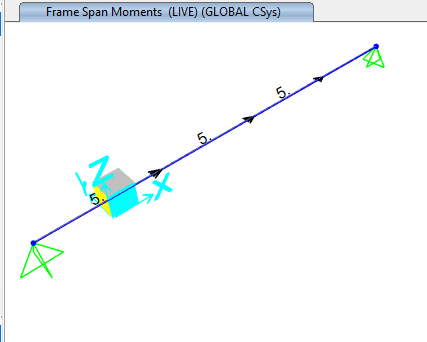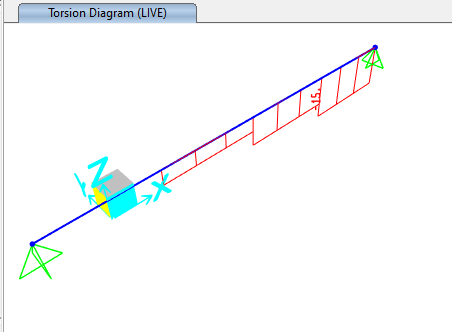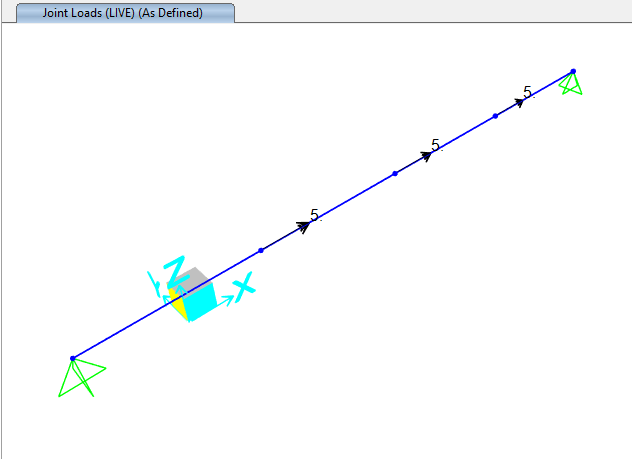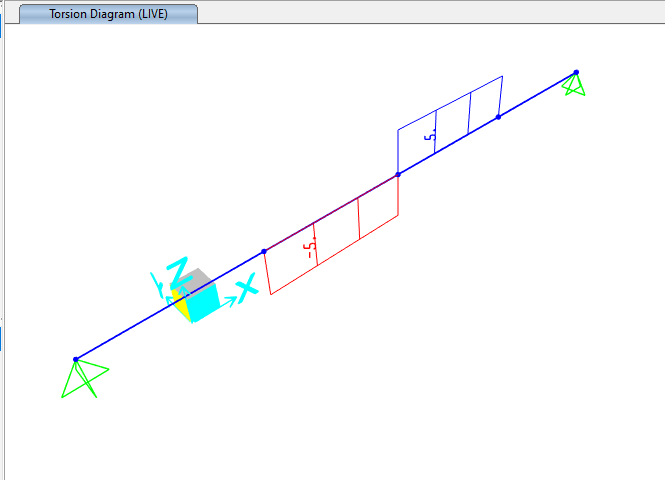dccd
Civil/Environmental
- Feb 19, 2021
- 150
Hi, all. Just wondering which way of assigning point torsion of beam is the correct way ? I am using SAP2000 . The member is 5m, with point torsion at 1.25m, 2.5m and 3.75m respectively. In the first diagram, I assign the point torsion on frame directly (There's no joint along the member). Here's the torsion diagram looks like.


In the second way, put points in SAP2000 @ 0m , 1.25, 2.5, 3.75m and 5m. After which I draw the member and assign the point torsion to the point direcctly. Here's the torsion diagram looks like...


I have applied torsion as moment about x-axis. Which is the correct way ? Can someone enlighten me ??


In the second way, put points in SAP2000 @ 0m , 1.25, 2.5, 3.75m and 5m. After which I draw the member and assign the point torsion to the point direcctly. Here's the torsion diagram looks like...


I have applied torsion as moment about x-axis. Which is the correct way ? Can someone enlighten me ??



